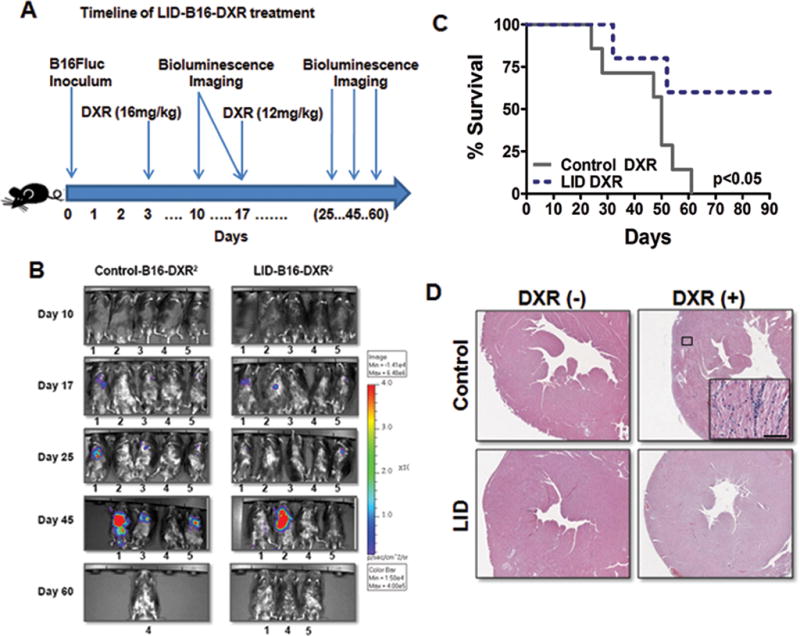Figure 5.

Differential stress resistance (DSR) against 2 cycles of high-dose DXR in melanoma bearing LID mice. (A) Timeline of experimental procedures (n=4/LID-B16, n=5/LID-B16-DXR, n=8/Control-B16, n=7/Control-B16-DXR). (B) Bioluminesence imaging of B16Fluc melanoma bearing LID mice and control mice treated with 2 cycles of high-dose DXR. Five mice were randomly selected and followed throughout the experiment to monitor tumor progression or regression. (C) Survival rate comparison between B16Fluc melanoma bearing LID and control mice treated with 2 cycles of high-dose DXR (P <0.05). (D) DXR induced cardiomyopathy in control and LID mice. Heart failure is a major outcome of acute DXR toxicity. Histological slides of the heart from DXR treated control mice showed loss of myofibrils and infiltration of immune cells, whereas DXR dependent cardiac myopathy was not observed in LID mice. Hematoxylin and eosin staining (H&E). Representative slide shown. Bar, 100μm.
